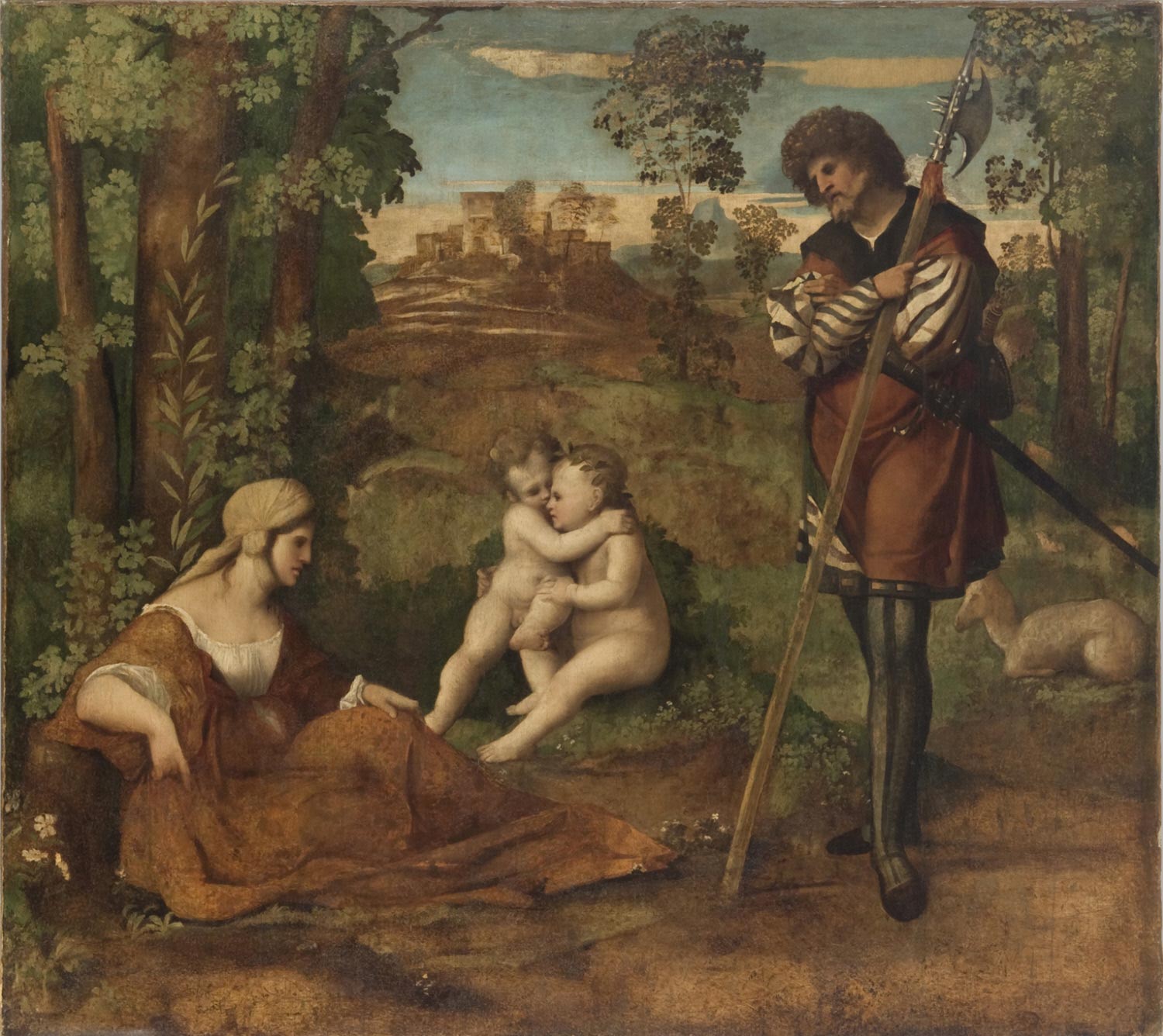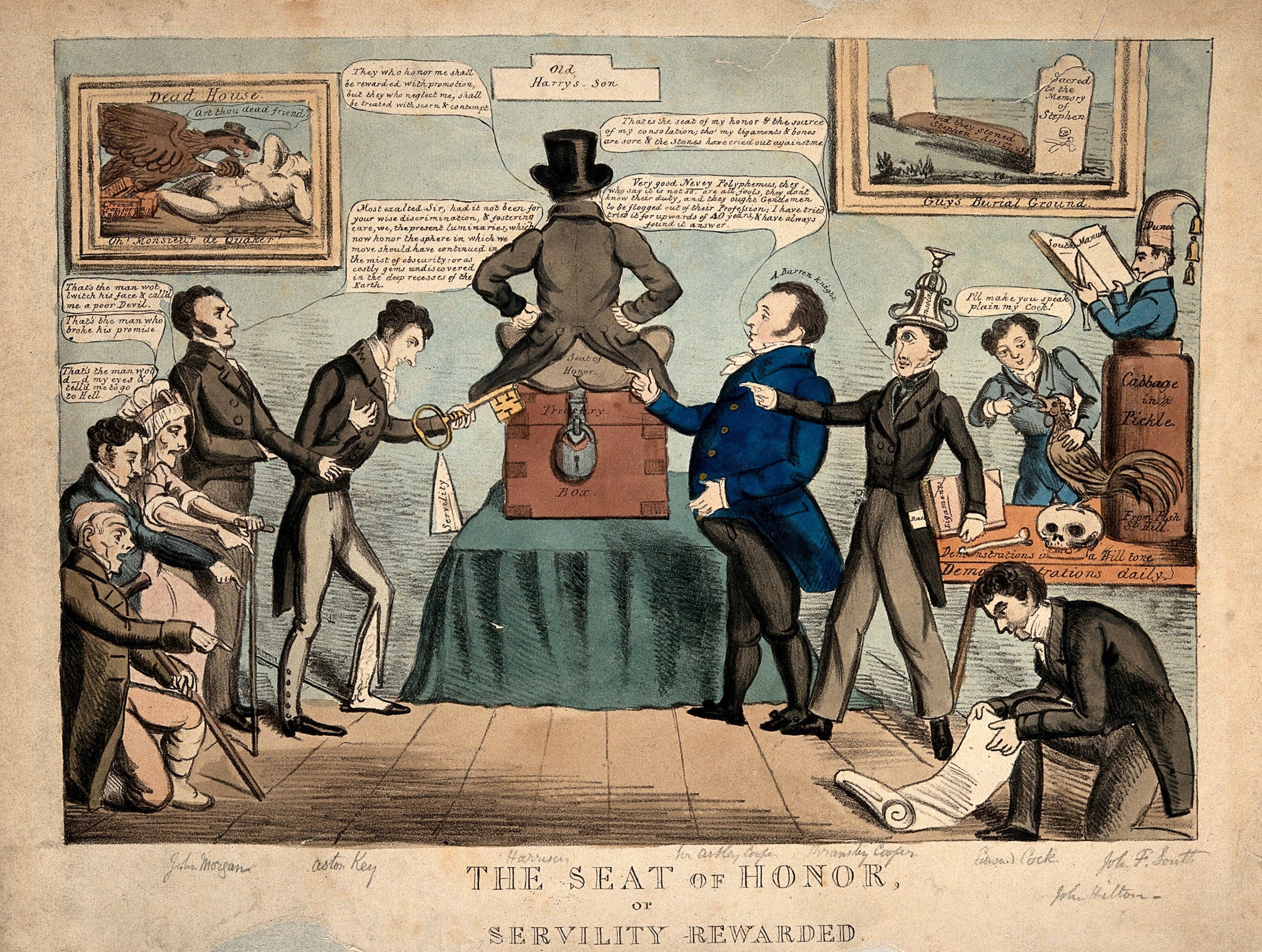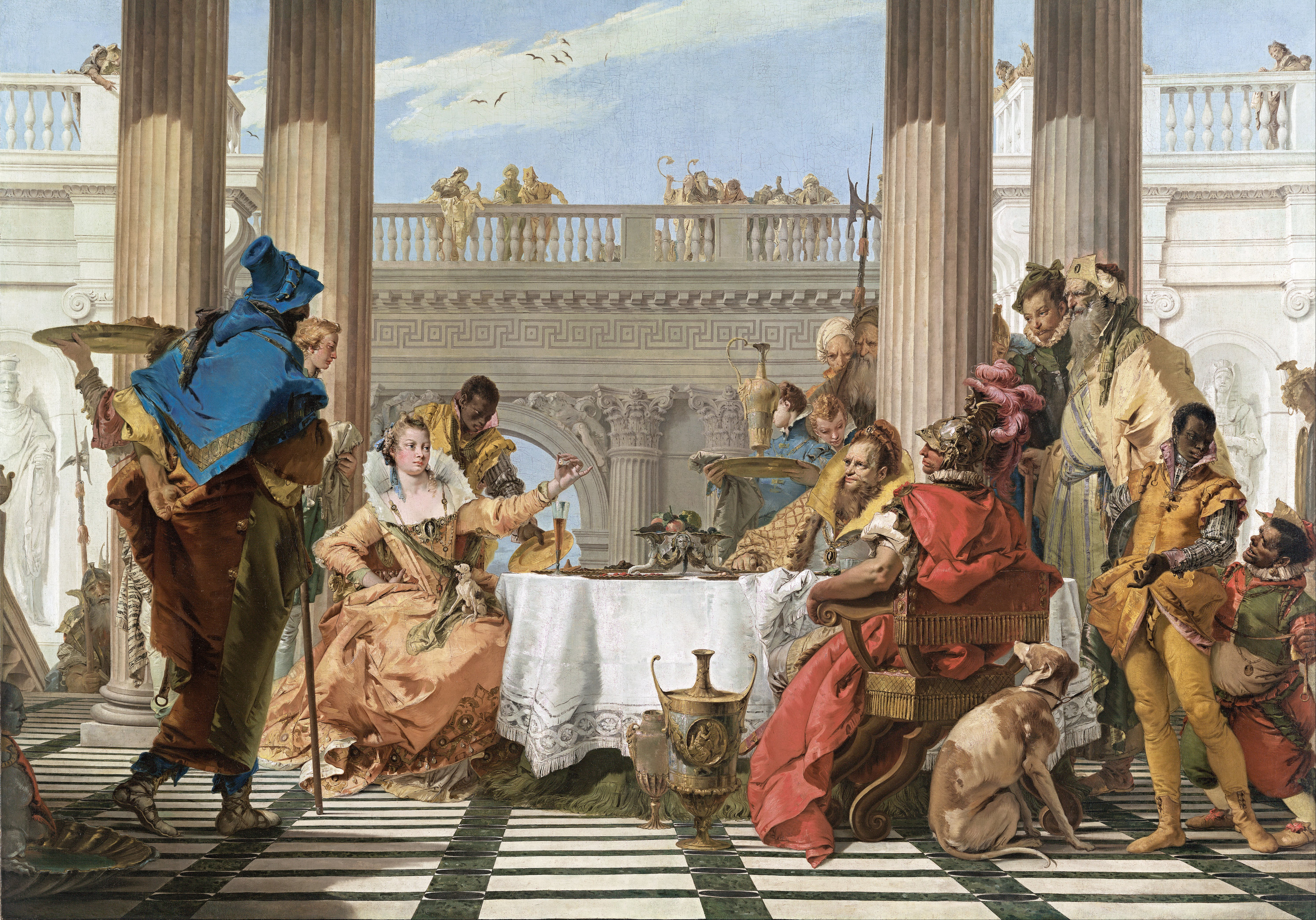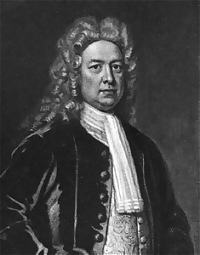|
Sir James Wright, 1st Baronet
Sir James Wright, 1st Baronet (baptised 1730 – 1804), of Ray House, Essex, was a British diplomat and art collector. He was the ambassador to Venice for Great Britain from 1766 to 1774. Background He was the son of James Wright of Warwick (d. 1754) and Mary Huband (1700 – 1768). He is usually referred to as gentleman, but may have been an attorney at law by training or profession. Wright's parents were married on 20 May 1728 in Ipsley, Worcester, England. He was baptised on 8 April 1730 at Warwick, St. Mary, Warwickshire, England. He had a brother, John (1729 – probably died young), and two sisters, Mary (1734 – about 1807) and Jane (1736 – about 1765). His sister Mary Wright married Rice Charleton, an English physician, medical researcher, and Fellow of the Royal Society on 11 November 1759 at Walcot St. Swithin, Somerset, England. His sister Jane Wright married John Moore (archbishop of Canterbury), John Moore, Archbishop of Canterbury (26 April 1730 – 18 January ... [...More Info...] [...Related Items...] OR: [Wikipedia] [Google] [Baidu] |
James Wright (governor)
James Wright (8 May 1716 – 20 November 1785) was a colonial lawyer and jurist who was the last British Royal Governor of the Province of Georgia. He was the only Royal Governor of the Thirteen Colonies to regain control of his colony during the American Revolutionary War. Biography James Wright was born in London to Robert Wright Jr, son of Sir Robert Wright, Lord Chief Justice of England. In 1730 Robert Wright, James Wright's father, accompanied Robert Johnson to the Province of South Carolina and served as its Chief Justice until 1739. James followed soon after and began the practice of law in Charleston. On 14 August 1741 he entered Gray's Inn in London. In 1747 James was named colonial attorney-general. He also began amassing plantation lands. Wright returned to London as an agent for the South Carolina colony in 1757. On one of his England visits, or on all of them, he stayed with his cousin William Rugge, the ancestor of the Rugge-Price baronets, on Conduit Str ... [...More Info...] [...Related Items...] OR: [Wikipedia] [Google] [Baidu] |
Nepotism
Nepotism is an advantage, privilege, or position that is granted to relatives and friends in an occupation or field. These fields may include but are not limited to, business, politics, academia, entertainment, sports, fitness, religion, and other activities. The term originated with the assignment of nephews to important positions by Catholic popes and bishops. Nepotism has been criticized since the ancient times by several philosophers, including Aristotle, Valluvar, and Confucius, condemning it as both evil and unwise. Origins The term comes from Italian word ''nepotismo'',"Nepotism." Dictionary.com. Retrieved 20 June 2013. which is based on Latin root ''nepos'' meaning nephew. Since the an ... [...More Info...] [...Related Items...] OR: [Wikipedia] [Google] [Baidu] |
Benedetto Caliari
Benedetto Caliari (1538–1598) was an Italian painter who was born into a family of artists. Benedetto's father Gabriele Caliari was a stonecutter. Benedetto's brother Paolo Caliari is better known as Veronese. Life Veronese's principal assistants were his younger brother Benedetto Caliari and his two sons Carlo or Carletto Caliari (1570–1596) and Gabriele Caliari (1568–1631). Benedetto Caliari, who was about ten years younger than Veronese, is reputed to have had a very large share in the architectural backgrounds that form so conspicuous a feature in Veronese's compositions. After Veronese's death in 1588, Benedetto, Carlo and Gabriele completed his unfinished paintings. They often signed collectively as ''Paolo's heirs''. The Accademia Carrara (Bérgamo, Italy), the Cleveland Museum of Art, the Hermitage Museum, the Honolulu Museum of Art, Kunsthistorisches Museum (Vienna) and Musée des Beaux-Arts de Caen are among the public collections holding works by Bened ... [...More Info...] [...Related Items...] OR: [Wikipedia] [Google] [Baidu] |
Giovanni Battista Tiepolo
Giovanni Battista Tiepolo ( , ; March 5, 1696 – March 27, 1770), also known as Giambattista (or Gianbattista) Tiepolo, was an Italian painter and printmaker from the Republic of Venice who painted in the Rococo style, considered an important member of the 18th-century Venetian school. He was prolific, and worked not only in Italy, but also in Germany and Spain. Giovan Battista Tiepolo, together with Giambattista Pittoni, Canaletto, Giovan Battista Piazzetta, Giuseppe Maria Crespi, and Francesco Guardi are considered the traditional Old Masters of that period. Successful from the beginning of his career, he has been described by Michael Levey as "the greatest decorative painter of eighteenth-century Europe, as well as its most able craftsman." Biography ''The Glory of St. Dominic'', 1723 Early life (1696–1726) Born in Venice, he was the youngest of six children of Domenico and Orsetta Tiepolo. His father was a small shipping merchant who belonged to a family th ... [...More Info...] [...Related Items...] OR: [Wikipedia] [Google] [Baidu] |
Giorgione
Giorgione (, , ; born Giorgio Barbarelli da Castelfranco; 1477–78 or 1473–74 – 17 September 1510) was an Italian painter of the Venetian school during the High Renaissance, who died in his thirties. He is known for the elusive poetic quality of his work, though only about six surviving paintings are firmly attributed to him. The uncertainty surrounding the identity and meaning of his work has made Giorgione one of the most mysterious figures in European art. Together with his younger contemporary Titian, he founded the Venetian school of Italian Renaissance painting, characterised by its use of colour and mood. The school is traditionally contrasted with Florentine painting, which relied on a more linear disegno-led style. Life What little is known of Giorgione's life is given in Giorgio Vasari's '' Lives of the Most Excellent Painters, Sculptors, and Architects''. He came from the small town of Castelfranco Veneto, 40 km inland from Venice. His name sometimes appe ... [...More Info...] [...Related Items...] OR: [Wikipedia] [Google] [Baidu] |
Palma Vecchio
Palma Vecchio (c. 1480 – 30 July 1528), born Jacopo Palma, also known as Jacopo Negretti, was a Venetian painter of the Italian High Renaissance. He is called Palma Vecchio in English and Palma il Vecchio in Italian ("Palma the Elder") to distinguish him from Palma il Giovane ("Palma the Younger"), his great-nephew, who was also a painter. Life Palma was born at Serina Alta near Bergamo, a dependency of the Republic of Venice, but his recorded career all took place in or near Venice. He is first recorded in Venice in 1510, but had probably already been there for some time. He was perhaps apprenticed to Andrea Previtali, who also came from Bergamo, and who returned there in 1511. Palma's earlier works show the influence of Giovanni Bellini, Previtali's master and by then the aged ''doyen'' of Venetian painting, but Palma came to follow the new style and subjects pioneered by Giorgione and Titian. After the deaths of Bellini and Giorgione, and the removal from Venice o ... [...More Info...] [...Related Items...] OR: [Wikipedia] [Google] [Baidu] |
Robert Adam
Robert Adam (3 July 17283 March 1792) was a British neoclassical architect, interior designer and furniture designer. He was the son of William Adam (1689–1748), Scotland's foremost architect of the time, and trained under him. With his older brother John, Robert took on the family business, which included lucrative work for the Board of Ordnance, after William's death. In 1754, he left for Rome, spending nearly five years on the continent studying architecture under Charles-Louis Clérisseau and Giovanni Battista Piranesi. On his return to Britain he established a practice in London, where he was joined by his younger brother James. Here he developed the "Adam Style", and his theory of "movement" in architecture, based on his studies of antiquity and became one of the most successful and fashionable architects in the country. Adam held the post of Architect of the King's Works from 1761 to 1769. Robert Adam was a leader of the first phase of the classical revival in En ... [...More Info...] [...Related Items...] OR: [Wikipedia] [Google] [Baidu] |
William Pitt, 1st Earl Of Chatham
William Pitt, 1st Earl of Chatham, (15 November 170811 May 1778) was a British statesman of the Whig group who served as Prime Minister of Great Britain from 1766 to 1768. Historians call him Chatham or William Pitt the Elder to distinguish him from his son William Pitt the Younger, who was also a prime minister. Pitt was also known as the Great Commoner, because of his long-standing refusal to accept a title until 1766. Pitt was a member of the British cabinet and its informal leader from 1756 to 1761 (with a brief interlude in 1757), during the Seven Years' War (including the French and Indian War in the American colonies). He again led the ministry, holding the official title of Lord Privy Seal, between 1766 and 1768. Much of his power came from his brilliant oratory. He was out of power for most of his career and became well known for his attacks on the government, such as those on Walpole's corruption in the 1730s, Hanoverian subsidies in the 1740s, peace with France ... [...More Info...] [...Related Items...] OR: [Wikipedia] [Google] [Baidu] |
Anthony Addington
Anthony Addington (1713 – 22 March 1790) was an English physician. Life Born in Twyford, Addington was educated at Winchester College. He went up to Trinity College, Oxford, where he took the degree of M.A. on 13 May 1740 and of M.D. on 24 January 1744. He was subsequently admitted a fellow of the College of Physicians, and went into practice in London, but was compelled by bad health to move to the country. His career gained considerable public attention when he appeared as an expert for the prosecution of Mary Blandy for the poisoning of her father Francis Blandy in 1752. He then retired to Reading in Berkshire, where he derived a large income from his profession, until his death in 1790. He devoted his attention particularly to the treatment of insanity, and was one of the physicians called in to see George III when he first showed symptoms of mental aberration. Addington was a confidential friend and adviser of Lord Chatham. He took part in unsuccessful negotiations of ... [...More Info...] [...Related Items...] OR: [Wikipedia] [Google] [Baidu] |
John Strange (diplomat)
John Strange (1732–1799) was an English diplomat and author. Biography He was the second and only surviving son of Sir John Strange, by his wife Susan, eldest daughter of Edward Strong of Greenwich, was born at Barnet in 1732, and educated privately and at Clare Hall, Cambridge (he was admitted a fellow-commoner 11 Oct. 1753), whence he graduated B.A. in 1753, and M.A. in 1755. On his father's death he saw through the press the volume of ''Reports'' published in 1755. He was left very well off, and upon leaving Cambridge travelled extensively in the south of France and Italy. Developing a taste for science and archaeology, Strange was elected a Fellow of the Royal Society on 10 April, and admitted to the Royal Society on 24 April 1766. Shortly afterwards he was elected F.S.A., and as the result of a summer spent in South Wales in 1768, he contributed to the first number of the '' Archæologia'' "An Account of Roman Remains in and near the City of Brecknock". In 1771 he made an ... [...More Info...] [...Related Items...] OR: [Wikipedia] [Google] [Baidu] |
Robert Udny
Robert Fullarton Udny or Udney (1725–1802) was a Scottish merchant, art collector and Fellow of the Royal Society. His collection, highly reputed in its time, was broken up at a sale in 1804. Life Udny was one of seven sons of James Udny (died 1761), an advocate in Aberdeen, and his wife Jean Walker. He became a sugar merchant, the owner of the Calivigny estate in Grenada. In 1767, Udny was elected a Fellow of the Society of Antiquaries of London, then of Broad Street. In 1774, then of Cavendish Square, he began to buy and deal in property in Hertfordshire, with a purchase from John Hadley the younger (born 1738), son of John Hadley the astronomer. He became a Fellow of the Royal Society in 1785. He inherited property at Dudwick, Aberdeenshire in 1786 on the death of Robert Fullerton, a soldier of fortune and cousin. Udny later bought property in the London area, starting with a house in the High Street, Teddington in 1789, which became Udny House. A picture gallery was adde ... [...More Info...] [...Related Items...] OR: [Wikipedia] [Google] [Baidu] |
Robert Richie (Venice)
Robert Ritchie may refer to: *Robert Ritchie (racing driver) (fl. 1955), Hong Kong racecar driver *Bob Ritchie (ice hockey) (born 1955), Canadian former ice hockey left winger * Robert J. Ritchie (politician) (fl. 1878–1890), lawyer and politician in New Brunswick, Canada * Robert J. Ritchie (railroad executive) (1990–2012), former president and CEO of the Canadian Pacific Railway *Robert Ritchie (Australian politician) (1836–1891), New South Wales politician *Robert O. Ritchie (fl. 2013–2017), professor of engineering *Robert T. Ritchie, priest and rector of St. Patrick's Cathedral, New York City *Robert Yarnall Richie (1908–1984), American photographer *Robert Ritchie (footballer) (1884–1954), Australian rules footballer *Robert Peel Ritchie (1835–1902), Scottish physician and medical historian * Robert Ritchie (''The West Wing''), a fictional character on the American TV drama ''The West Wing'' *Robert Ritchie, American rapper, known as Kid Rock *Robert Ritchie, may ... [...More Info...] [...Related Items...] OR: [Wikipedia] [Google] [Baidu] |






.jpg)

.jpg)